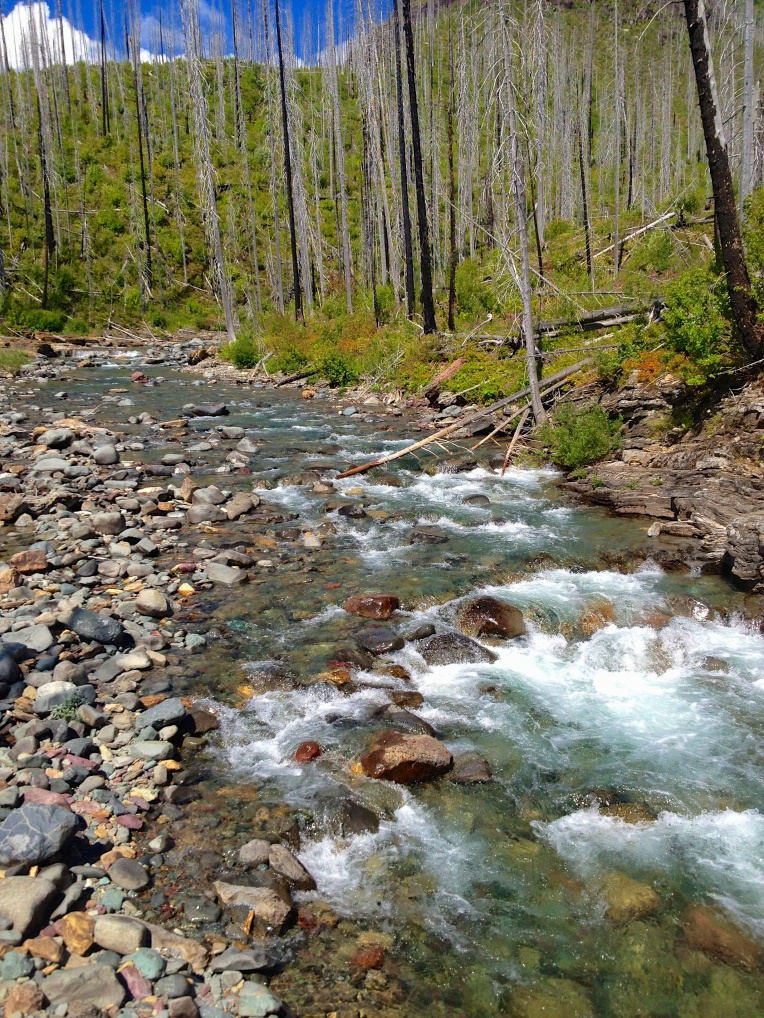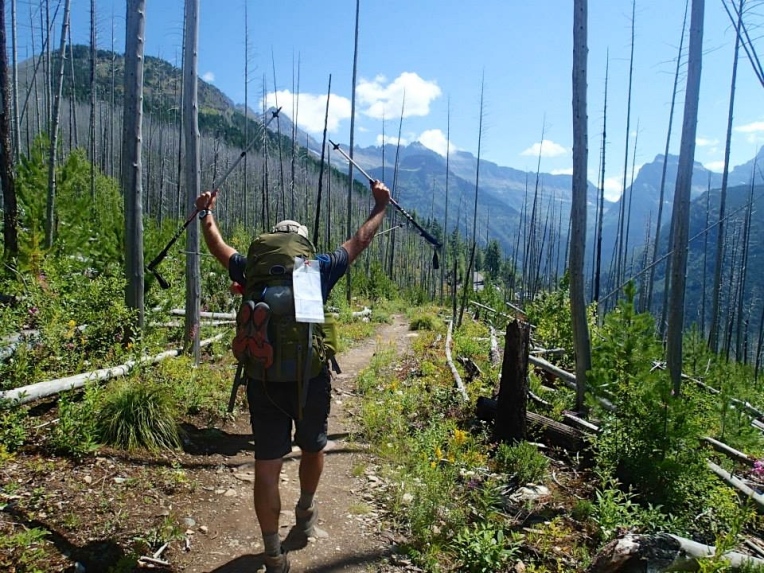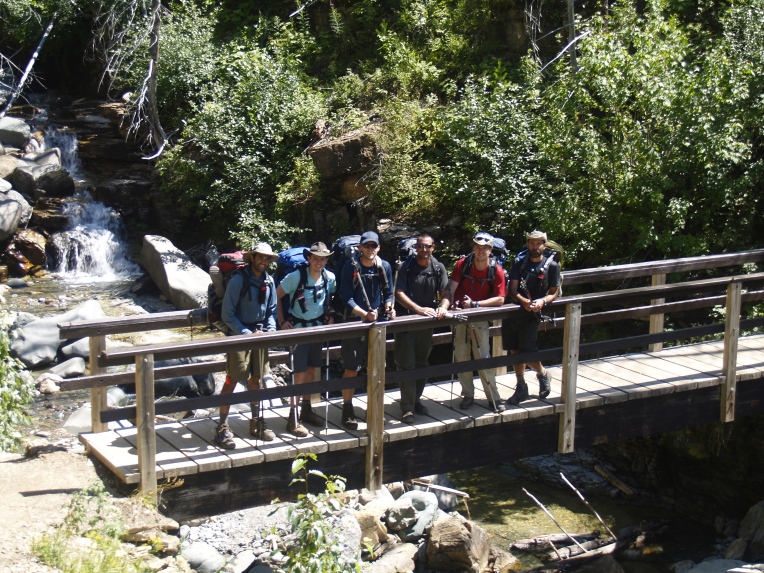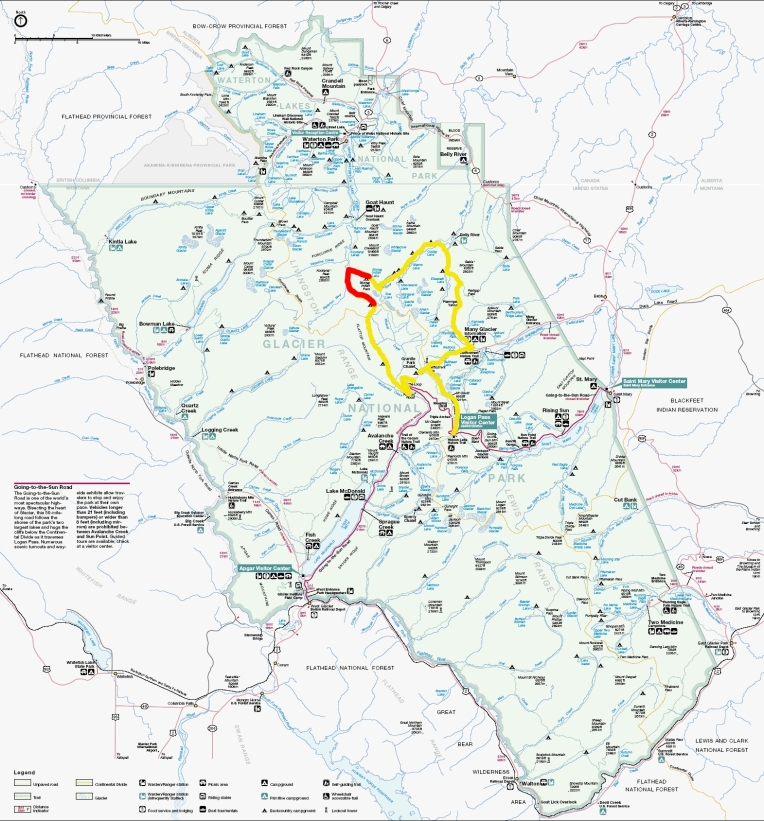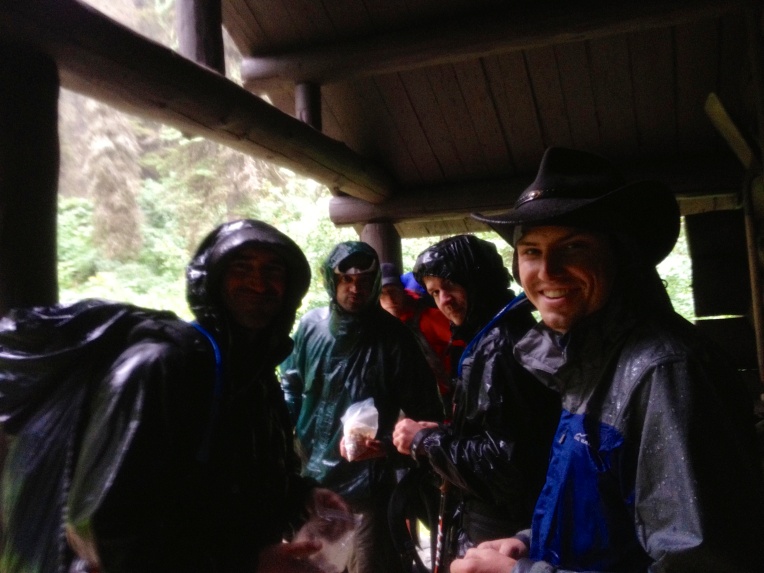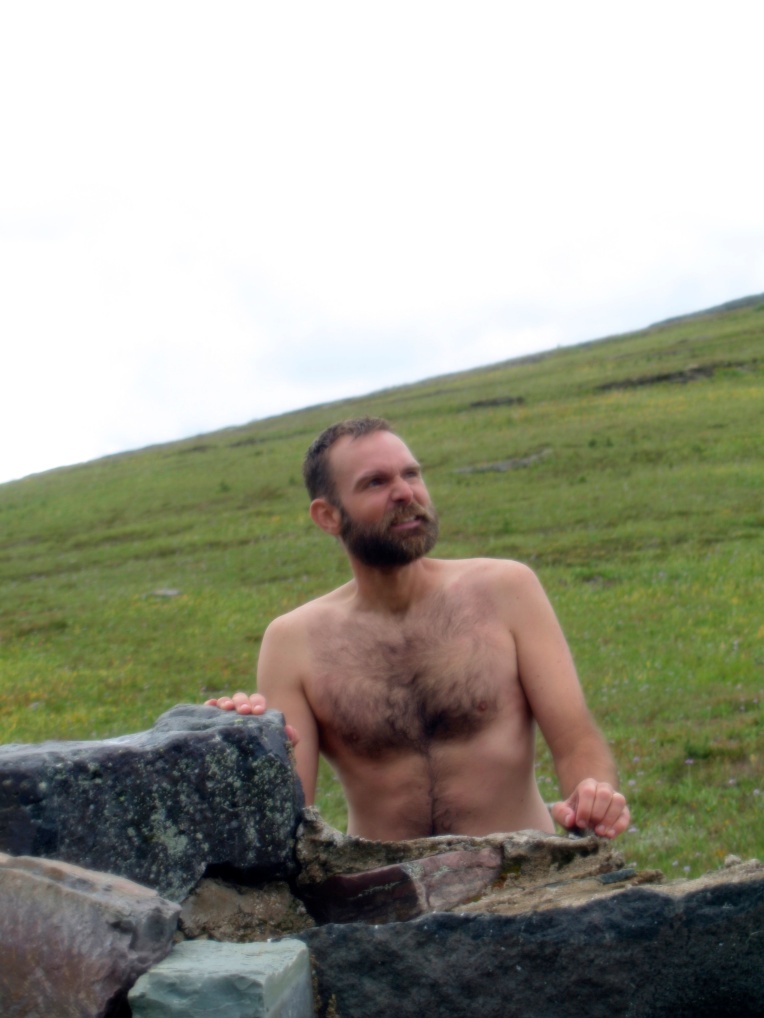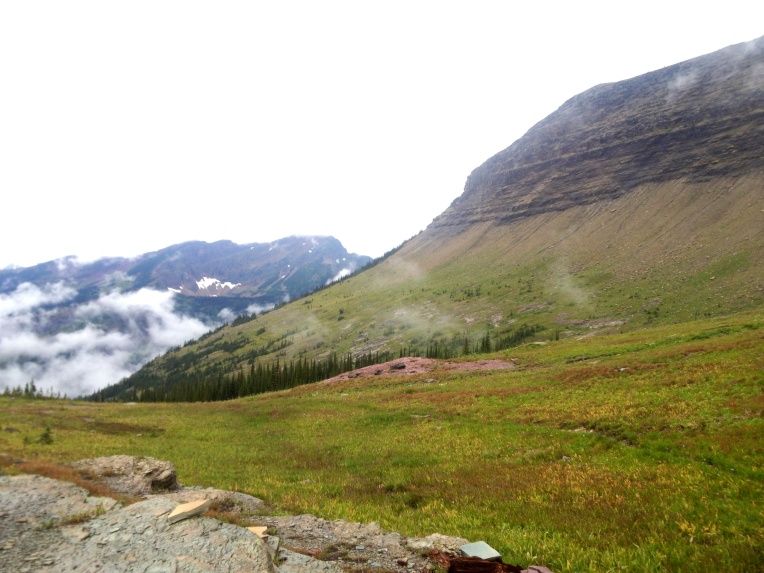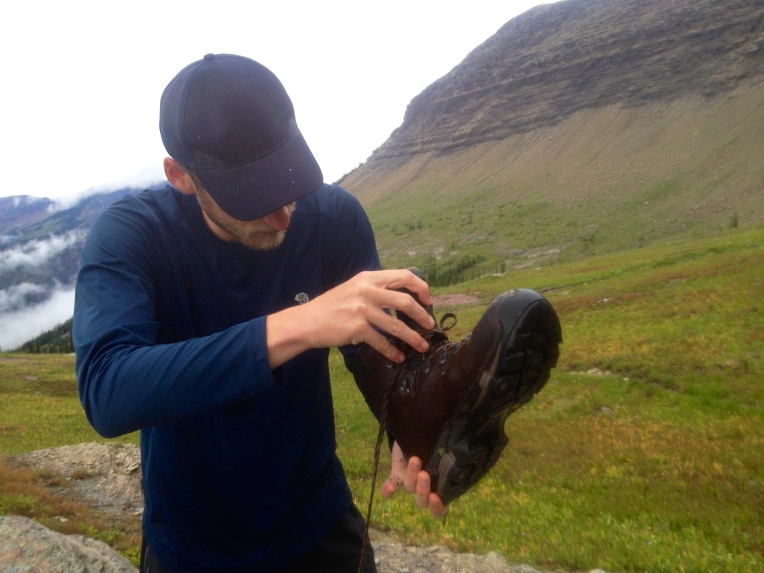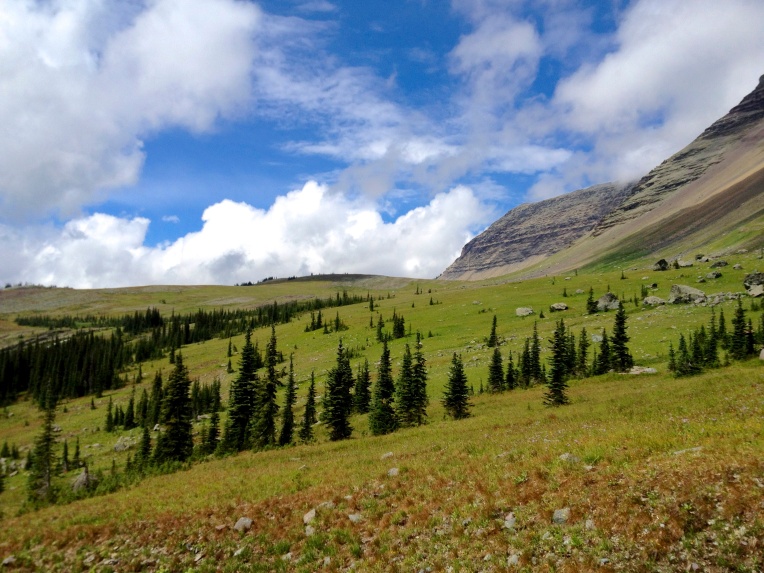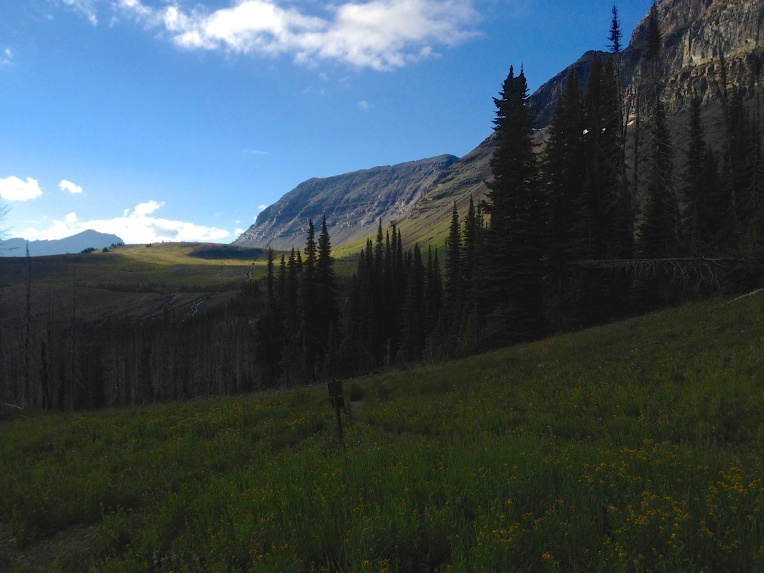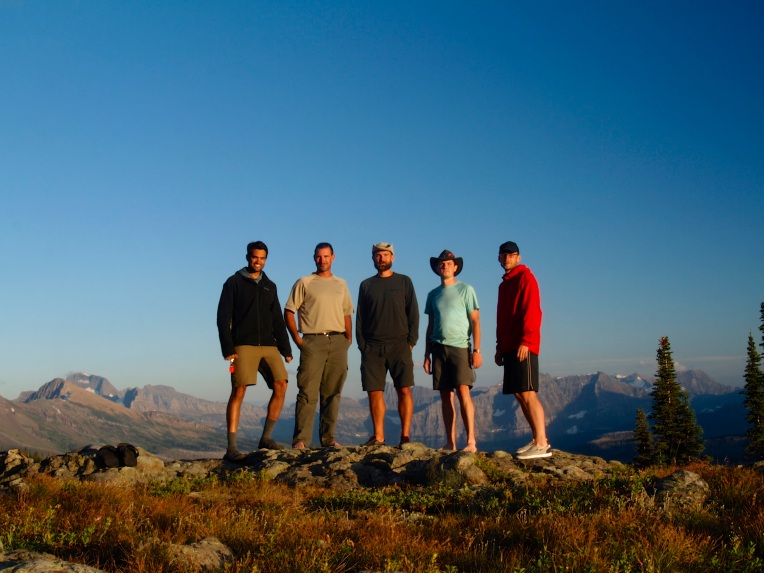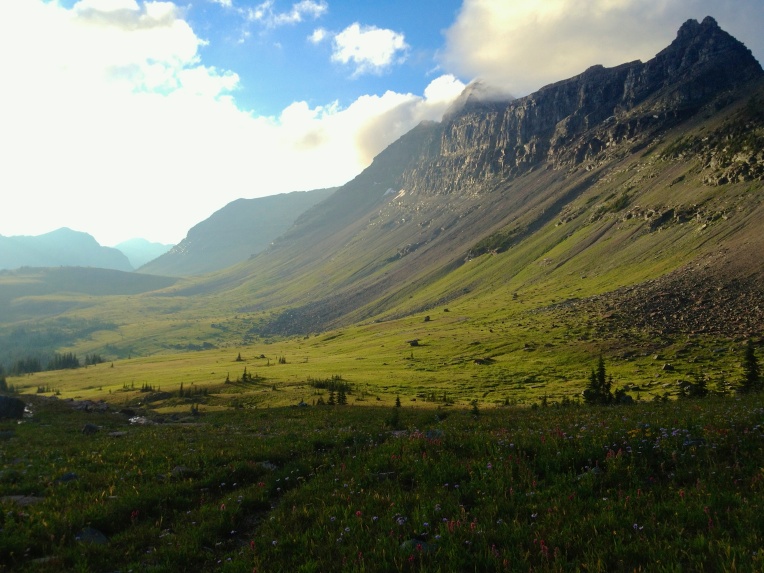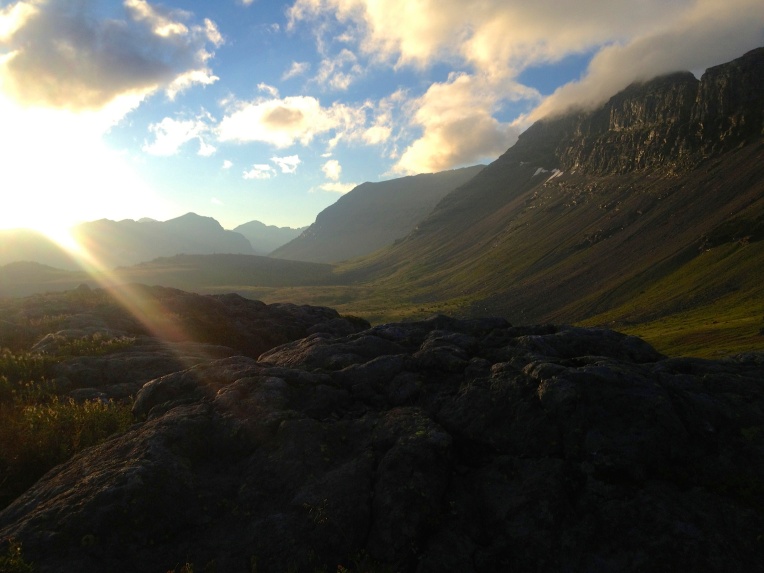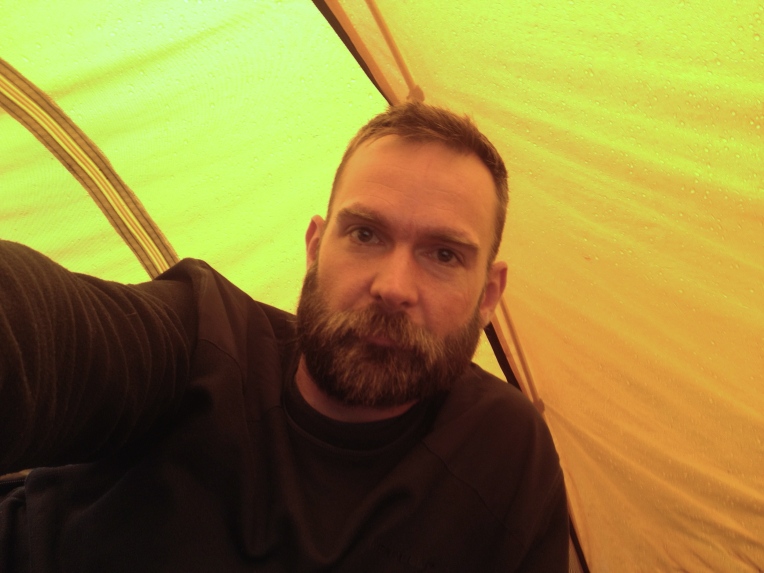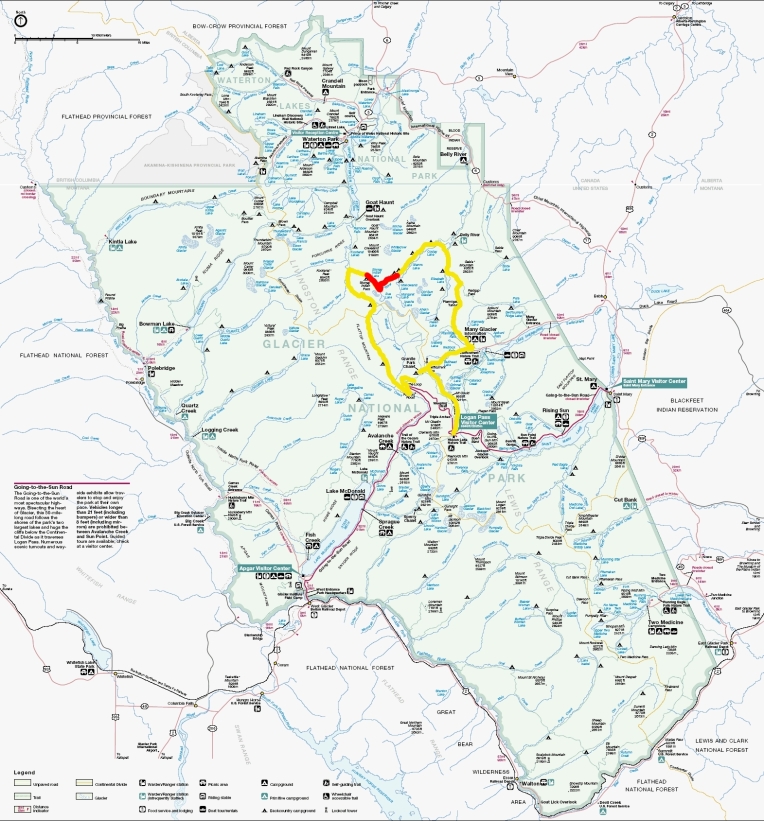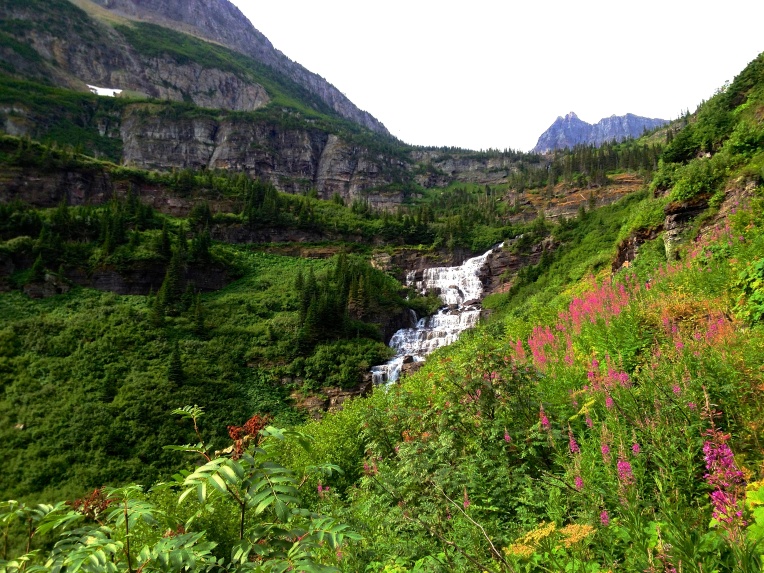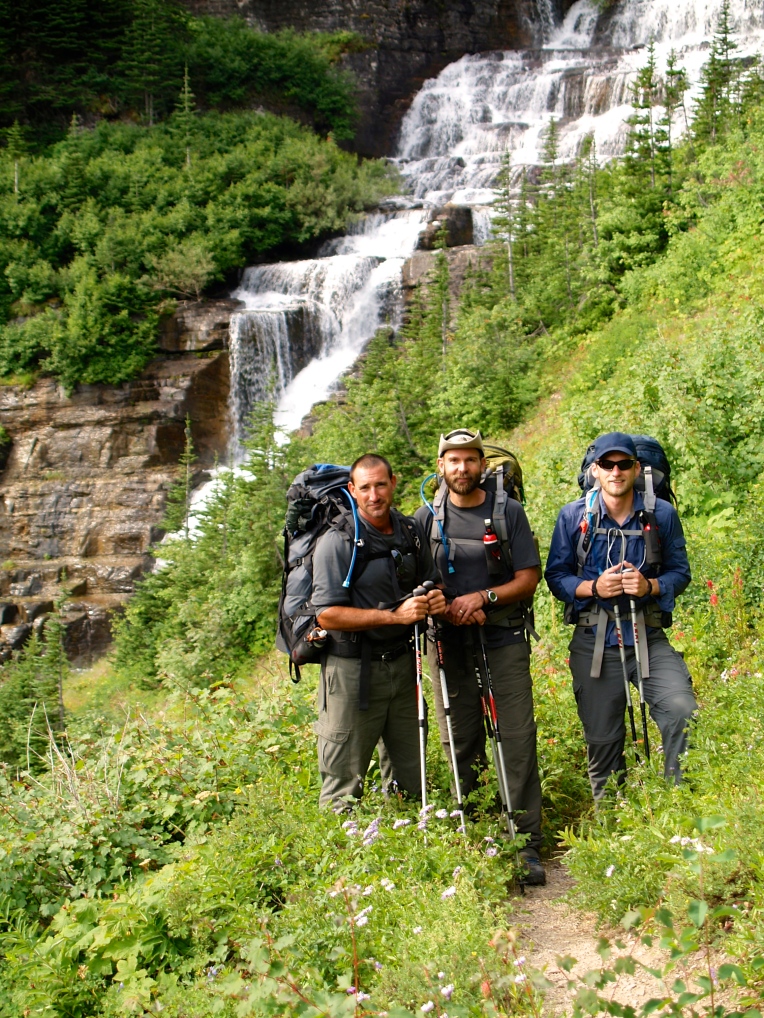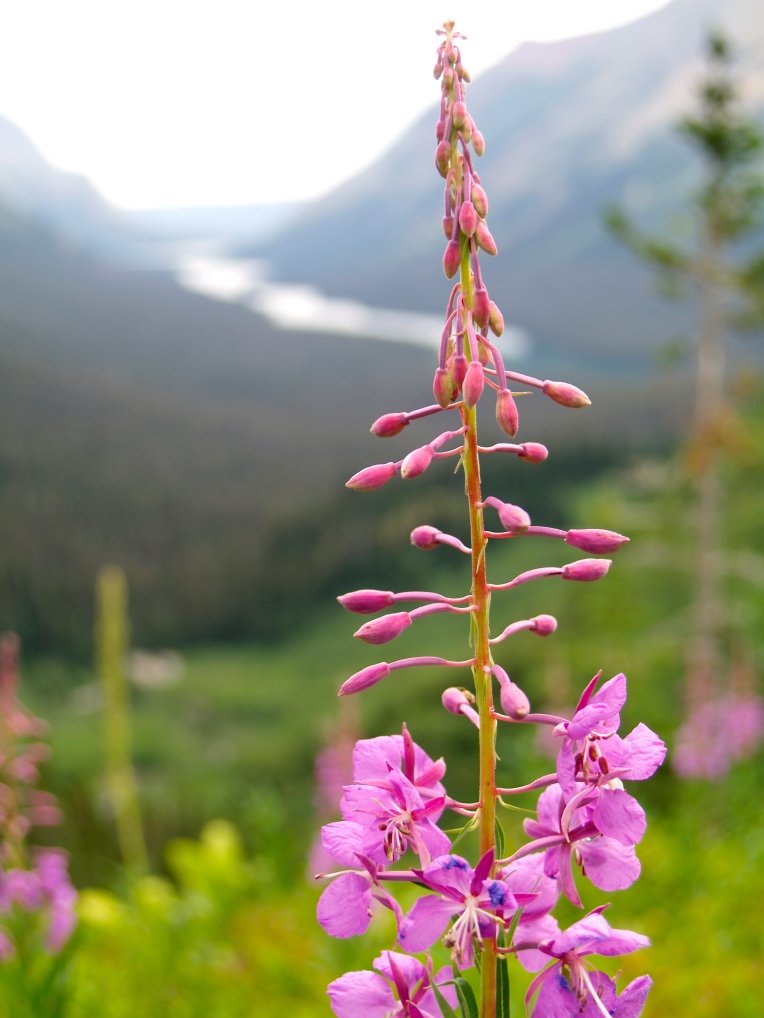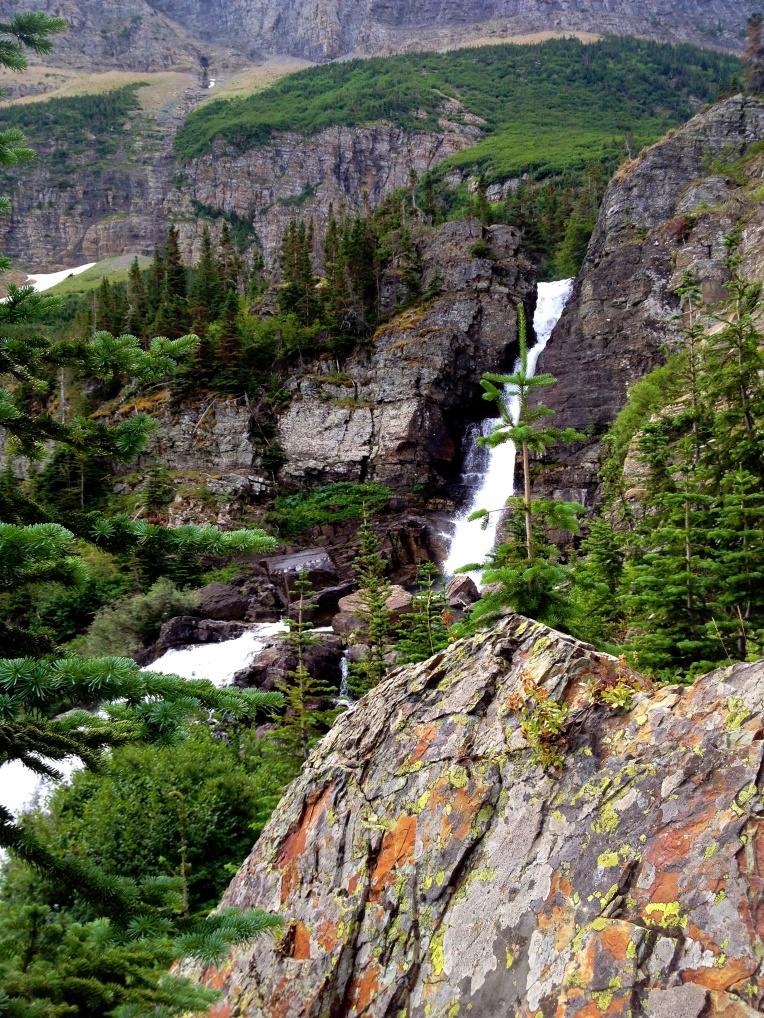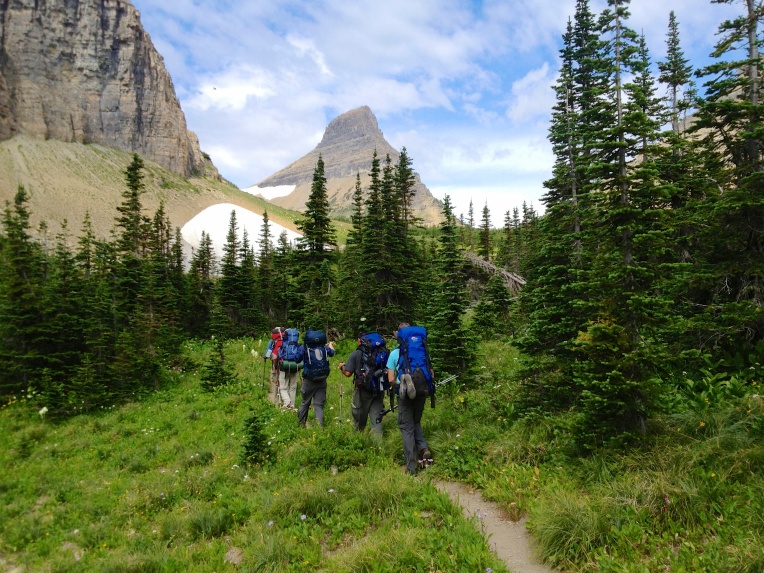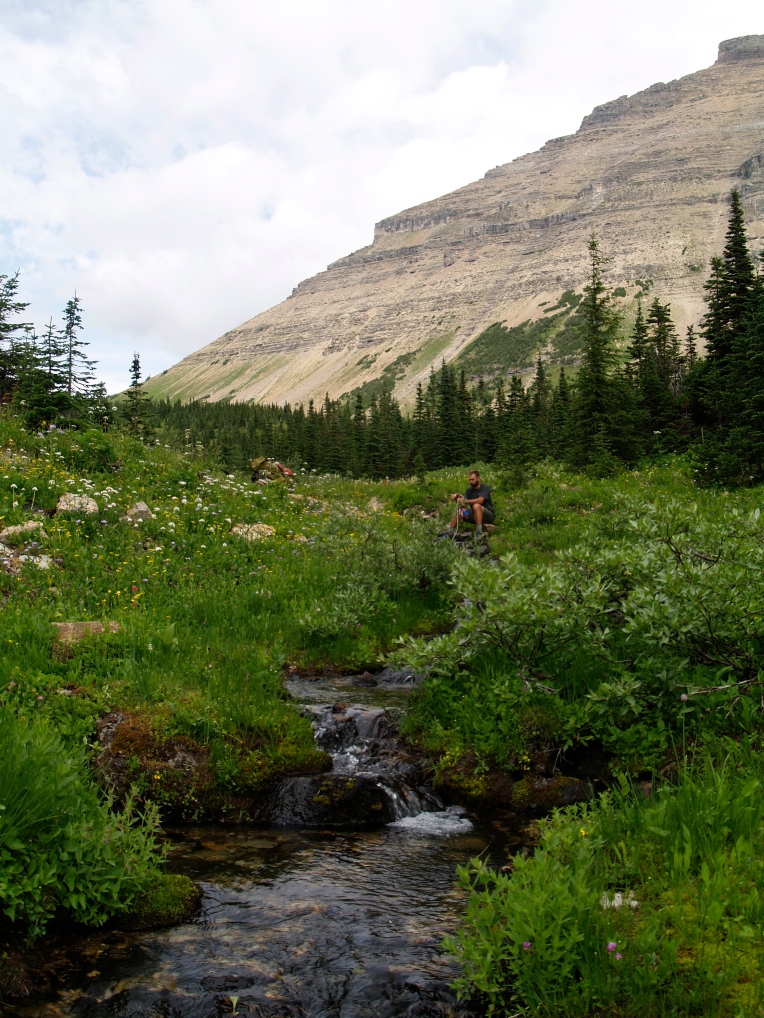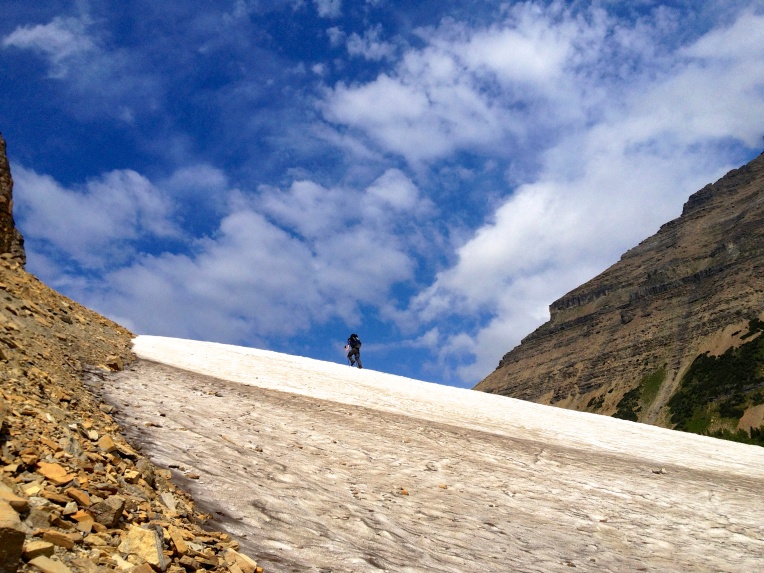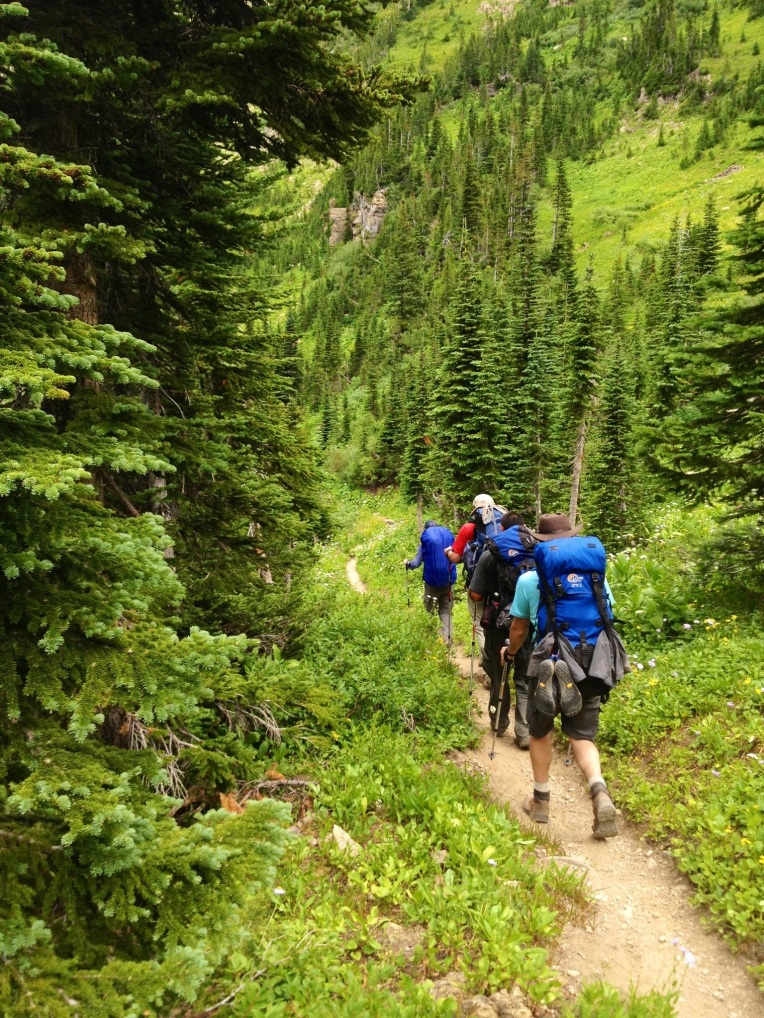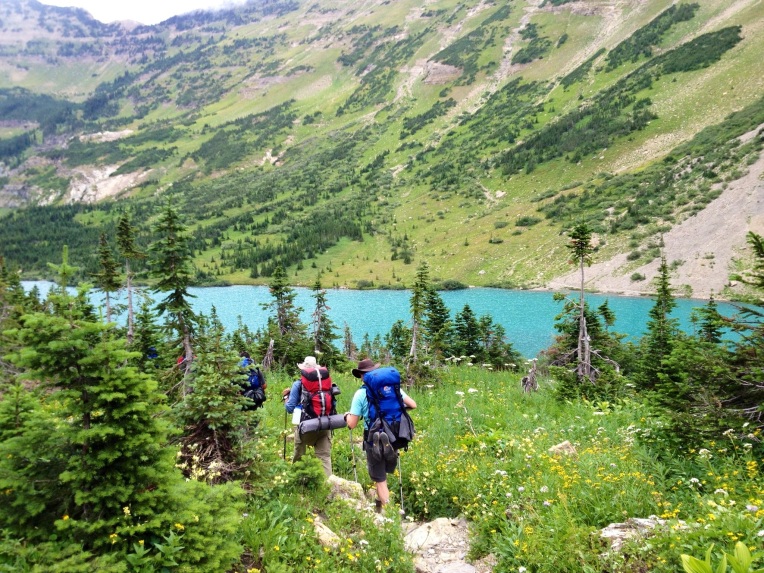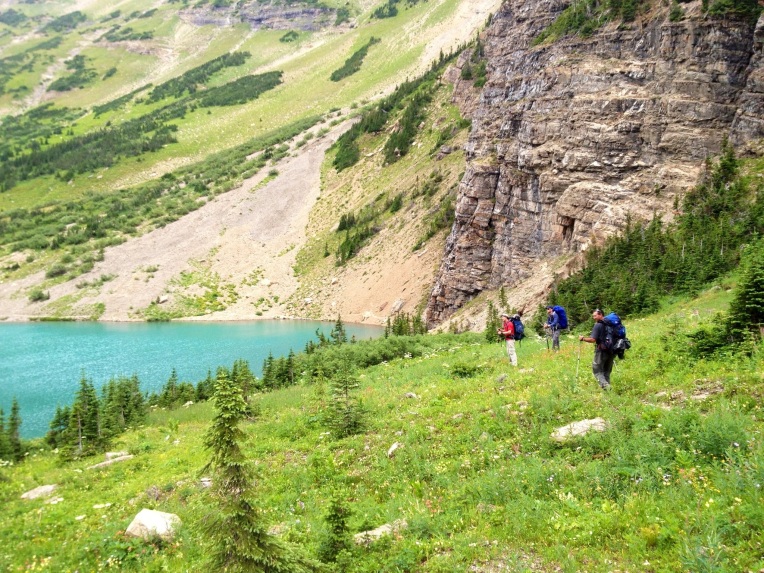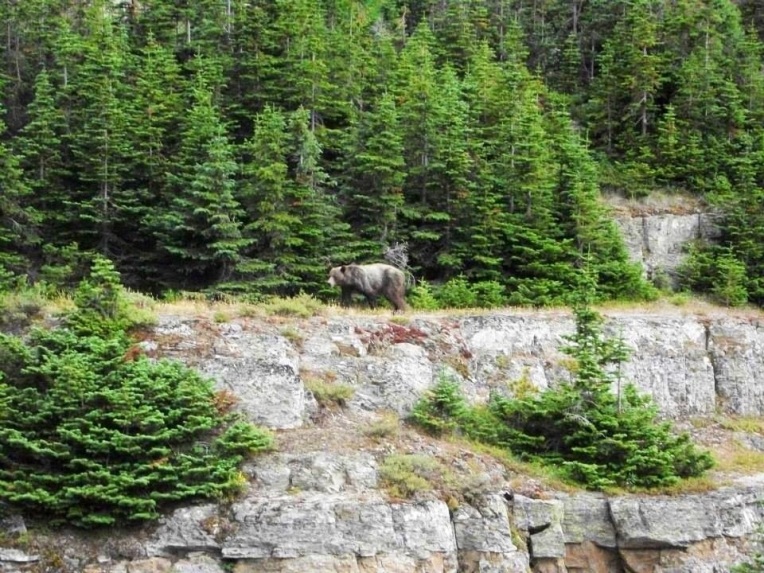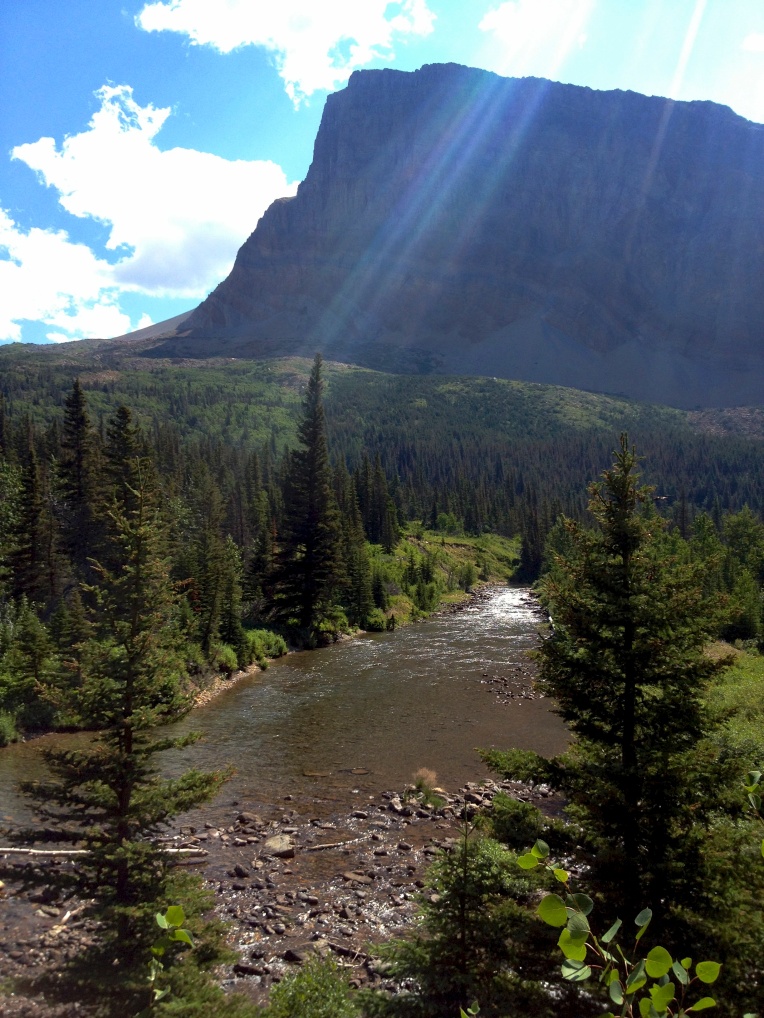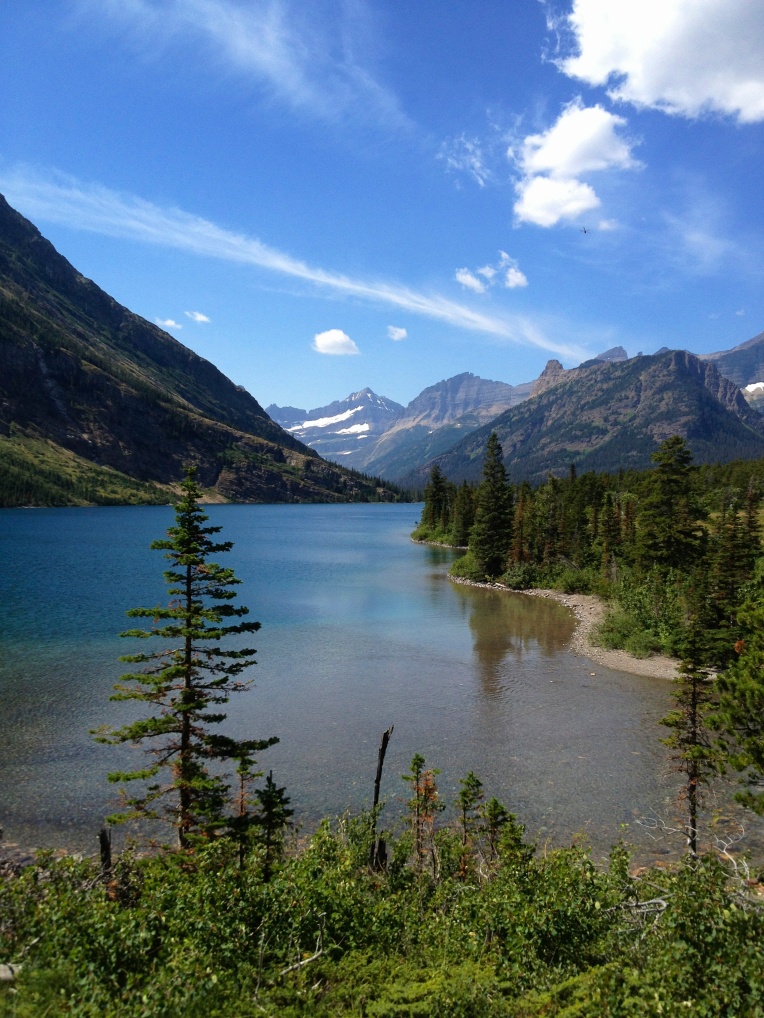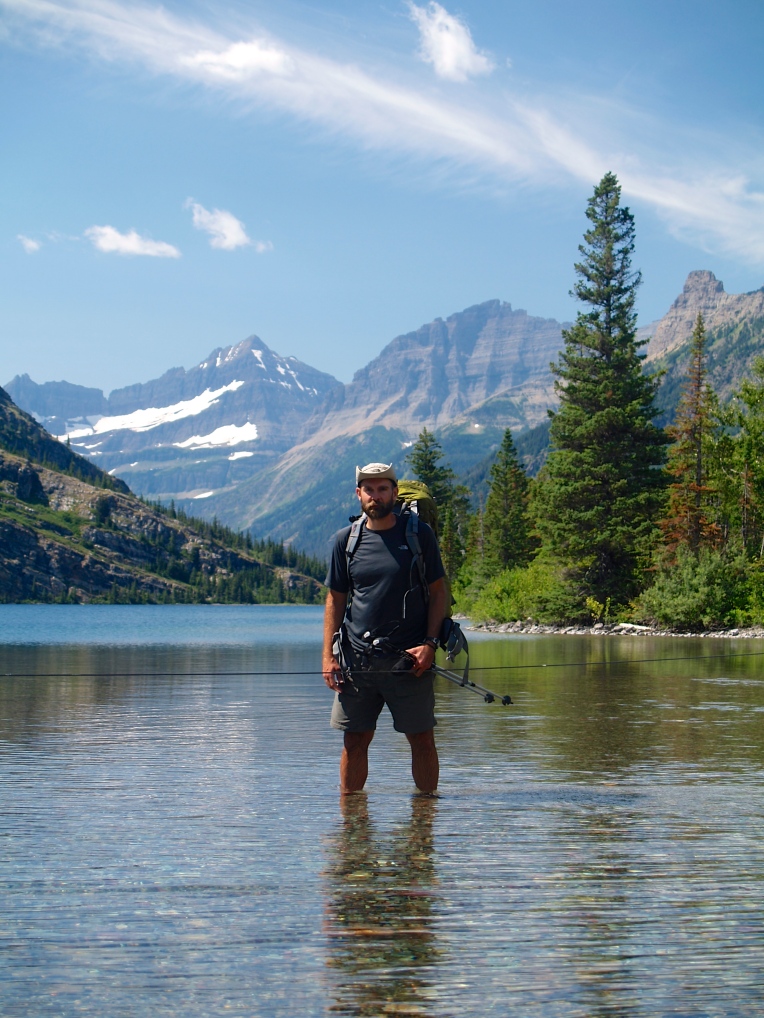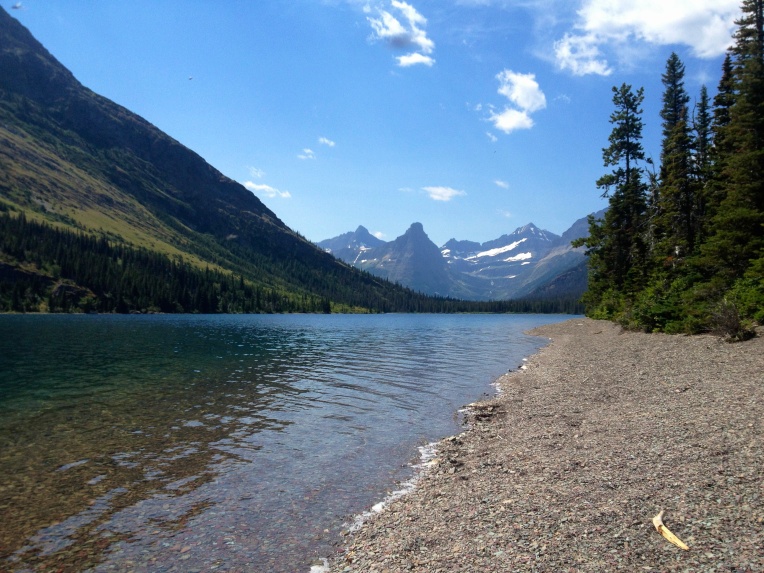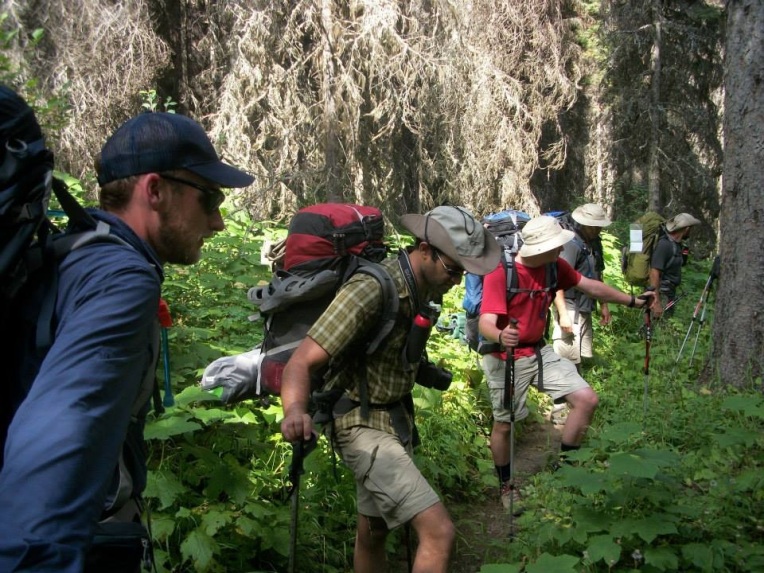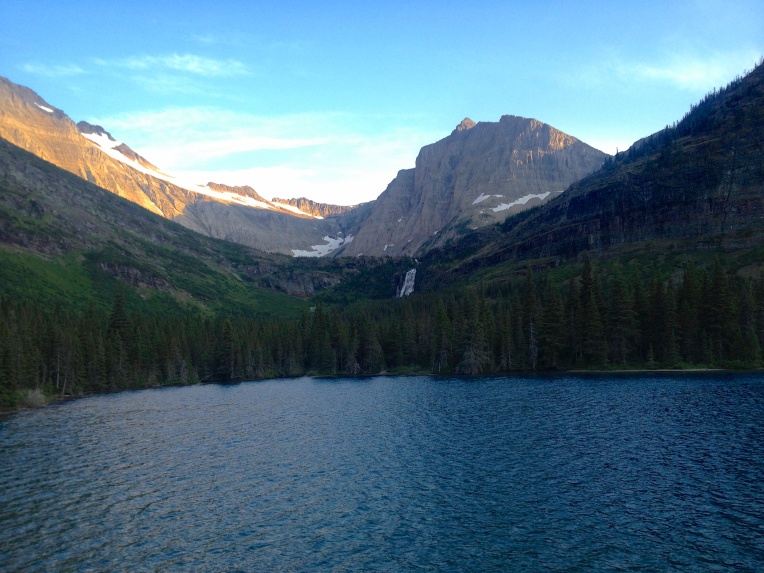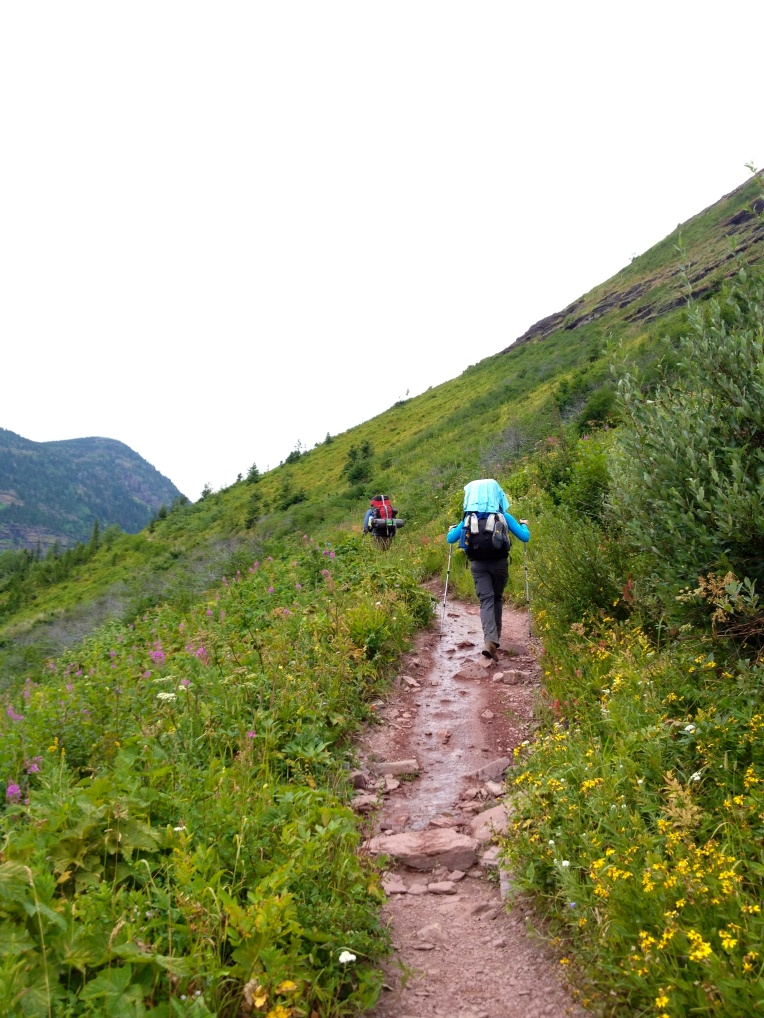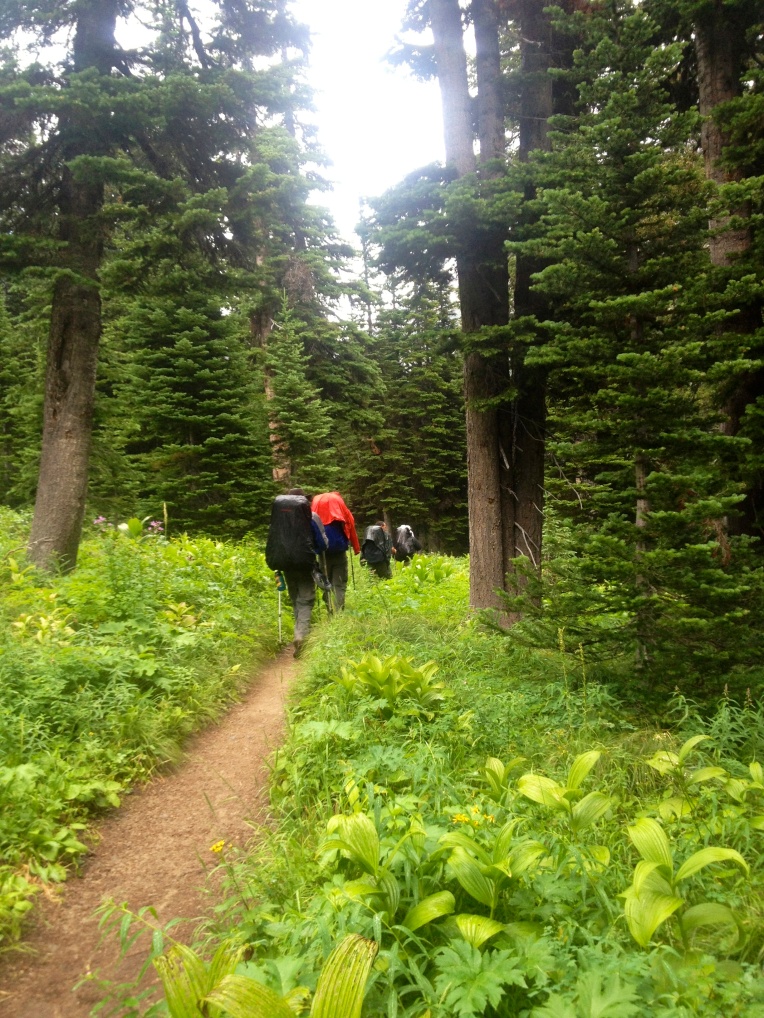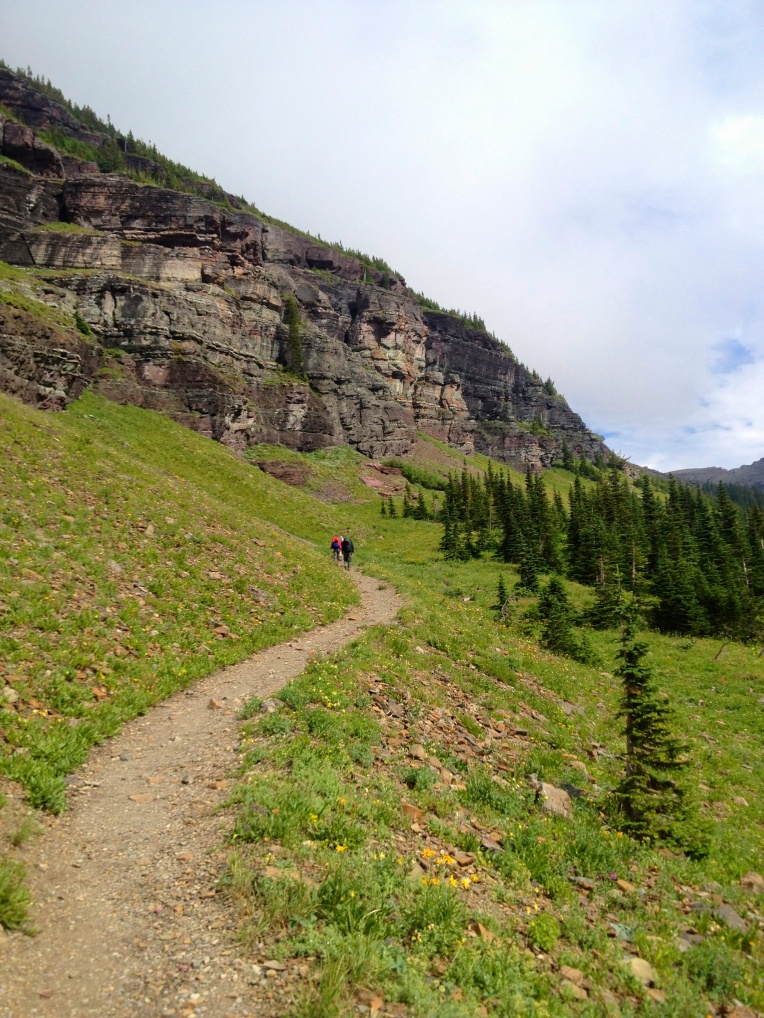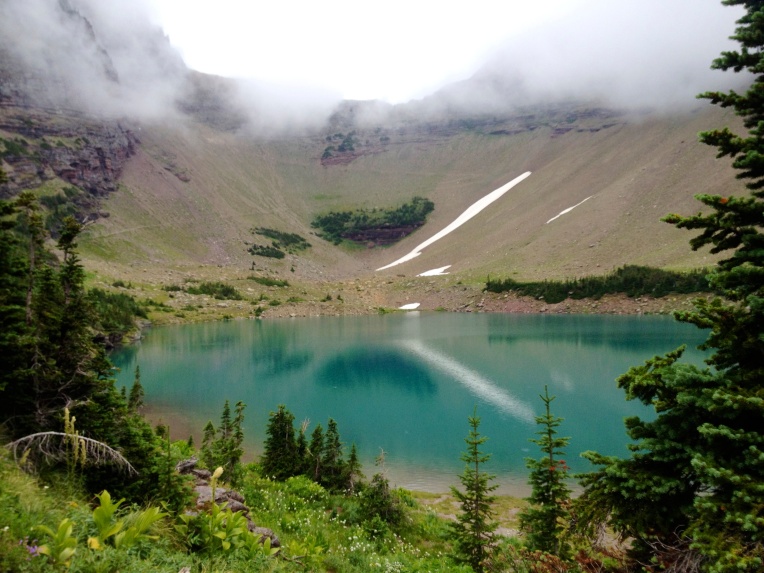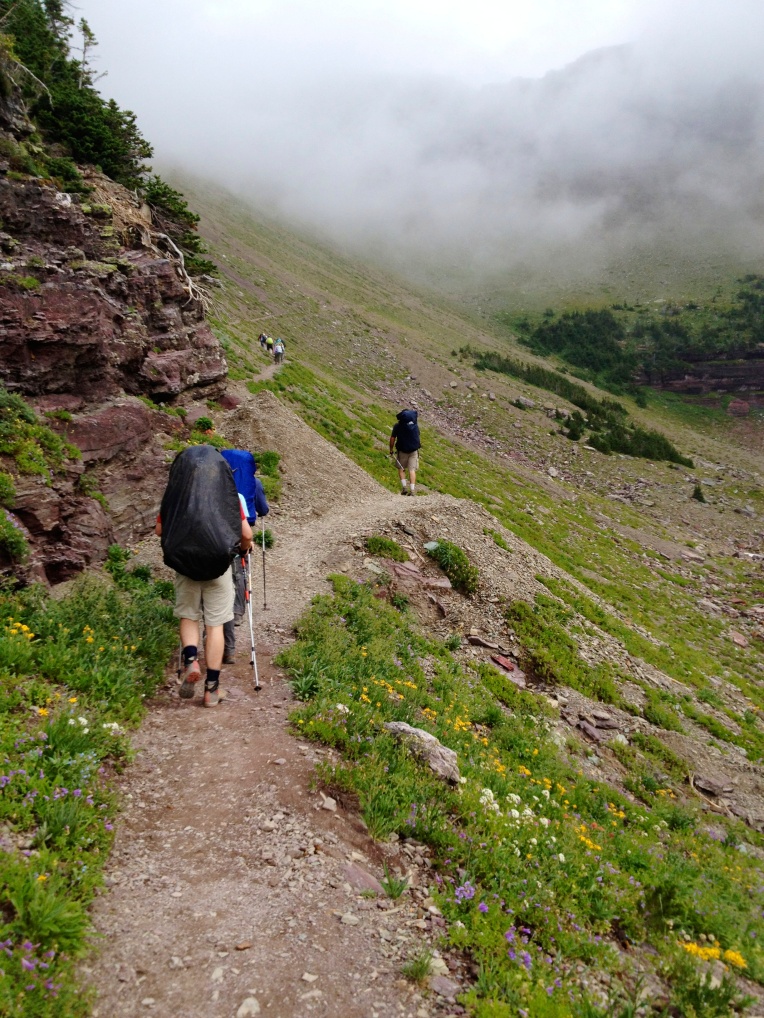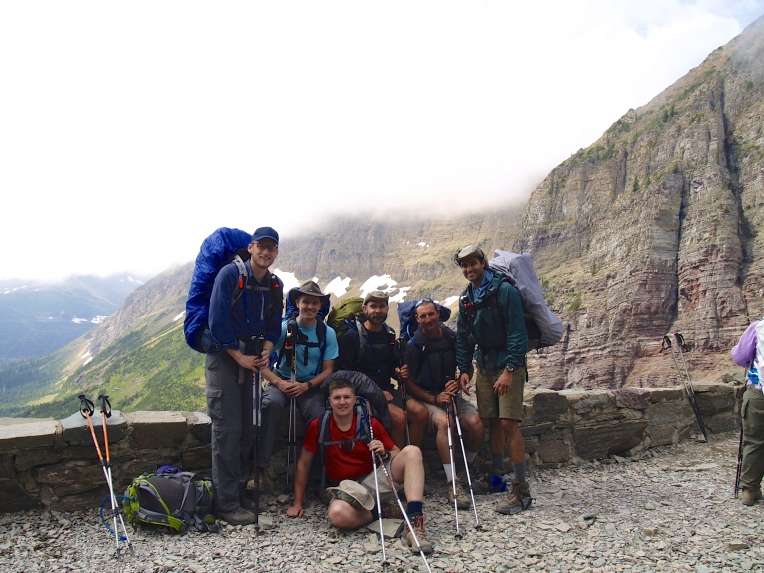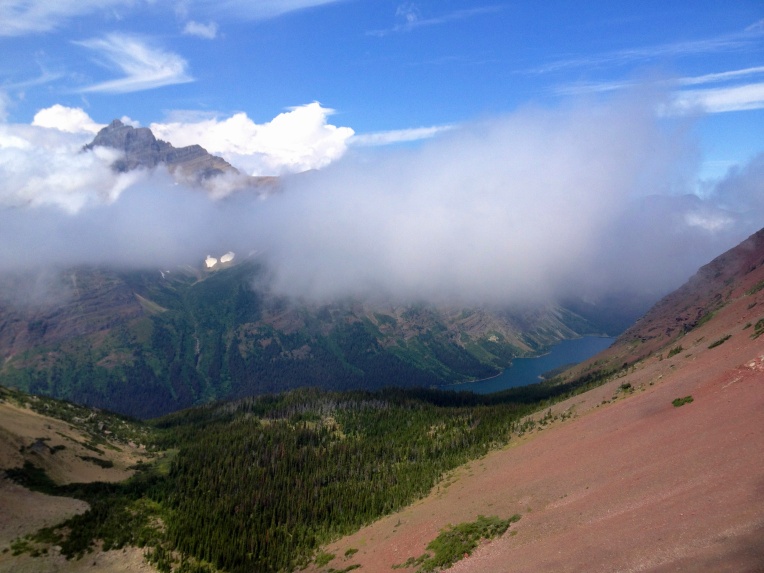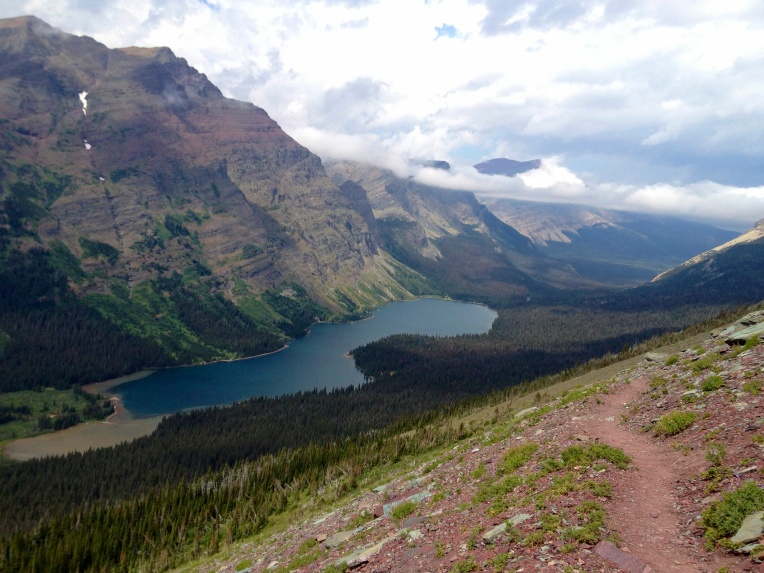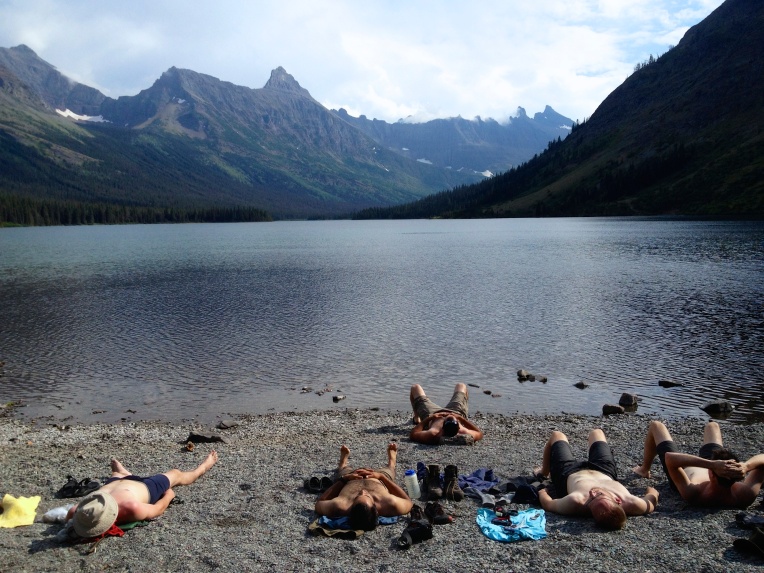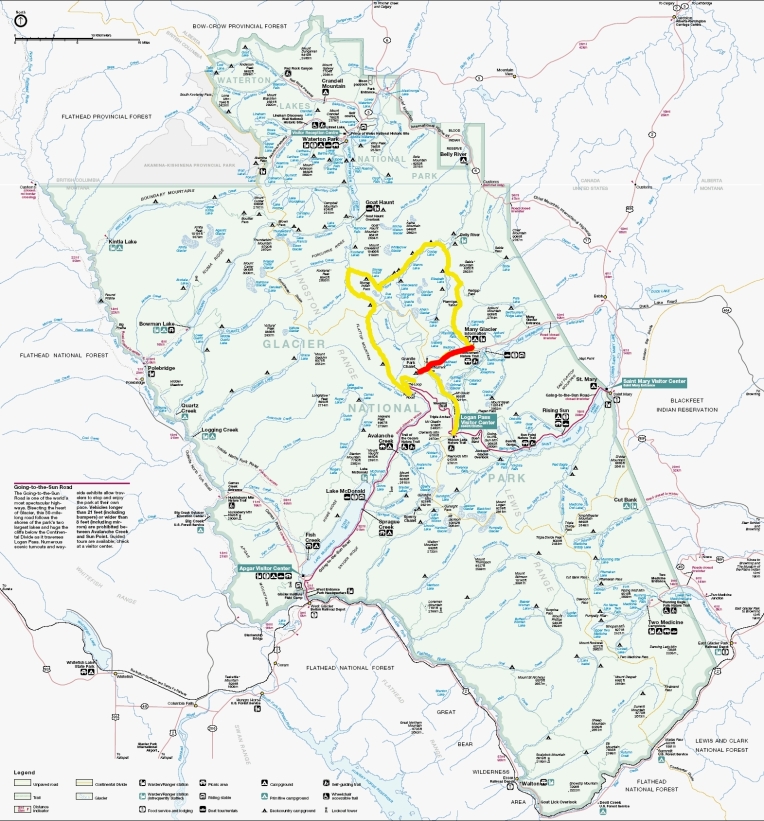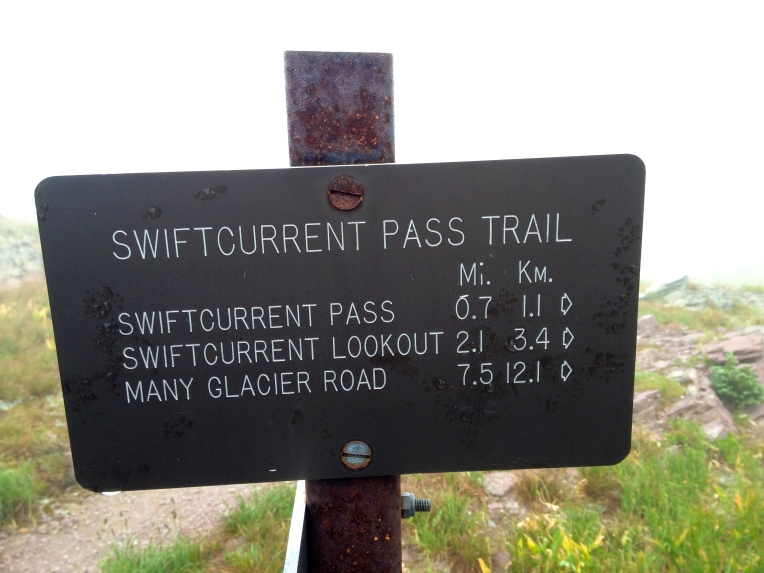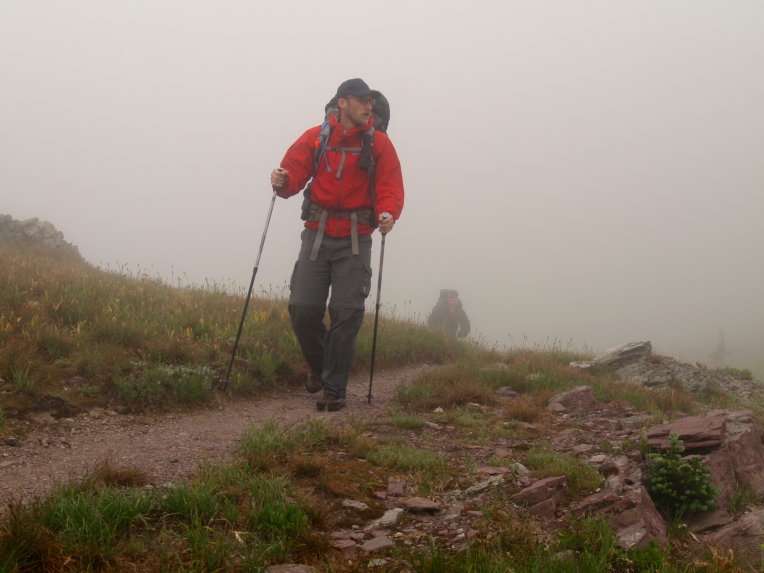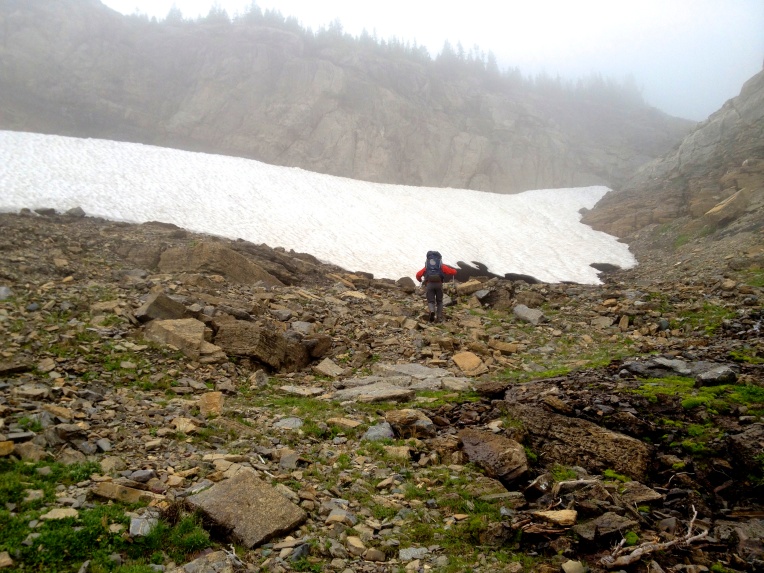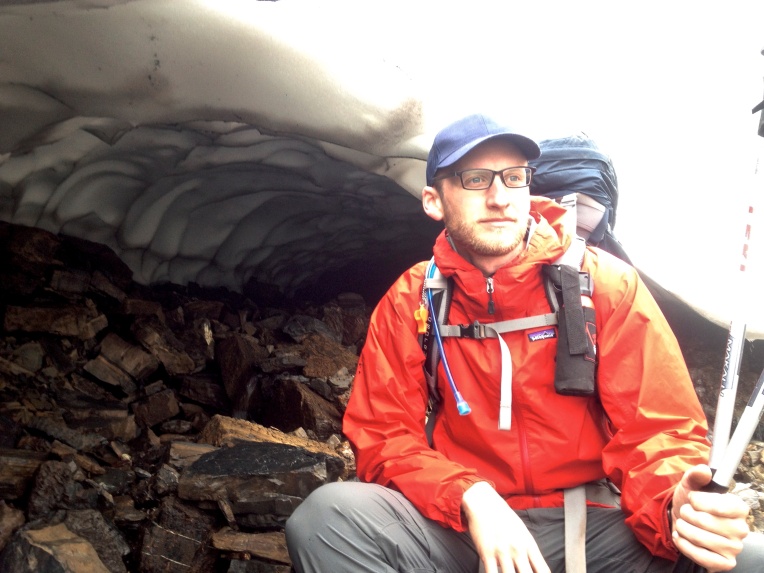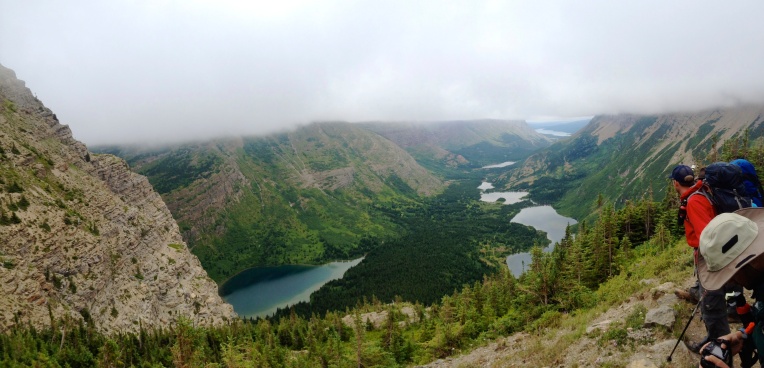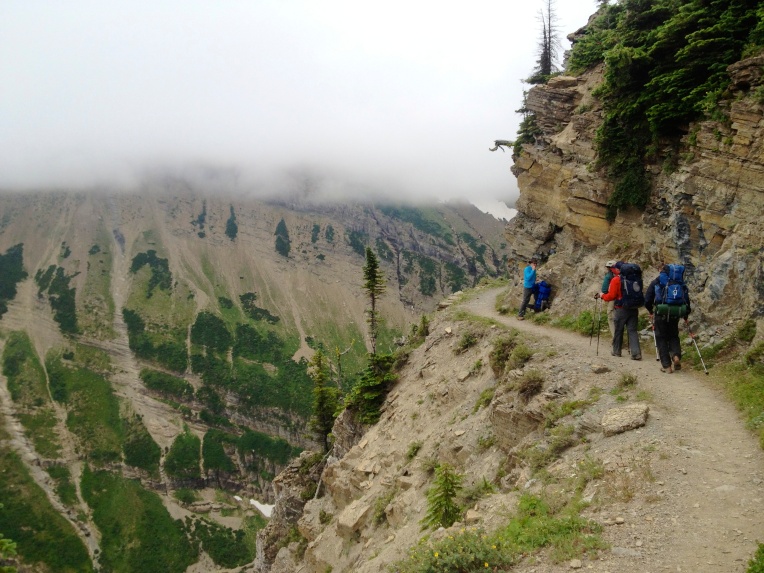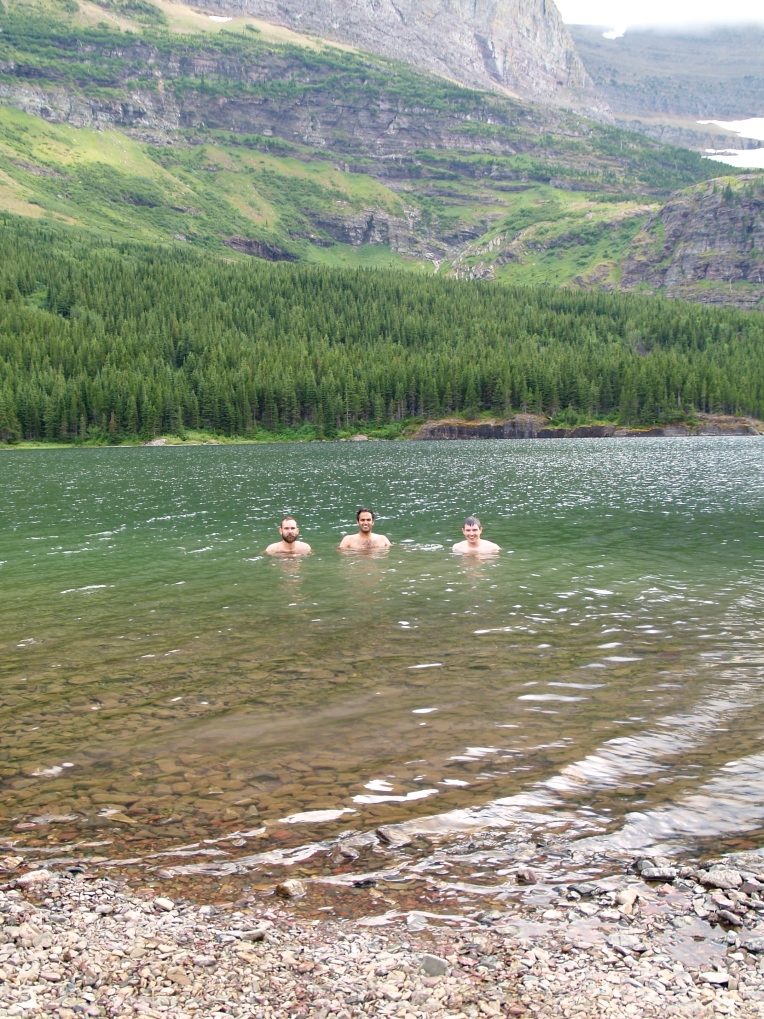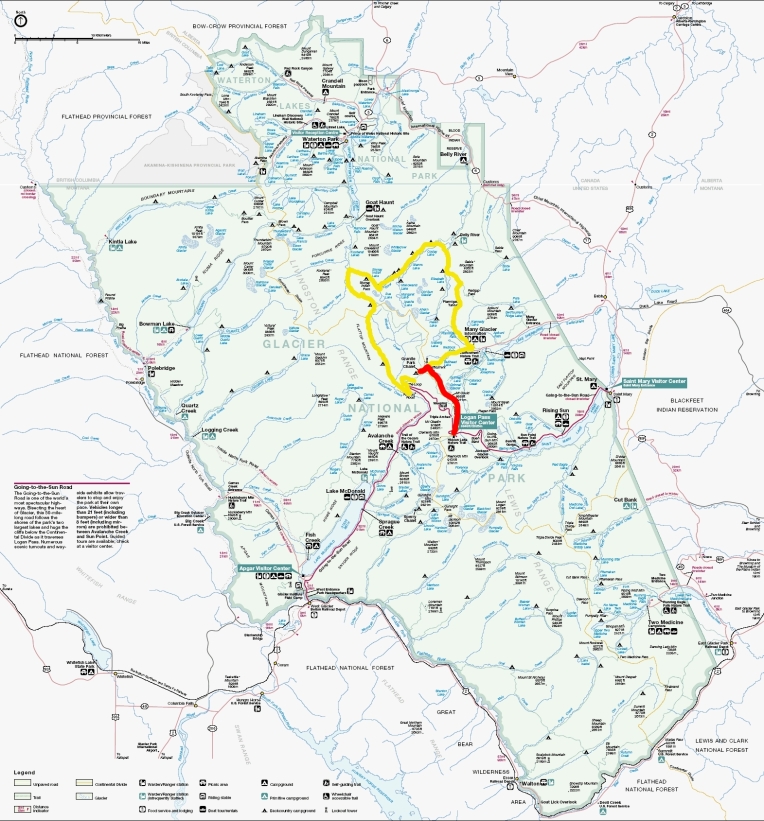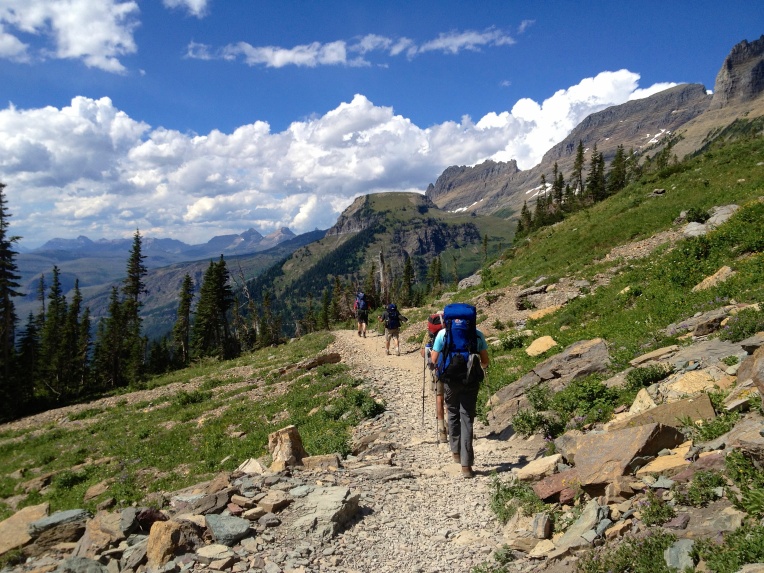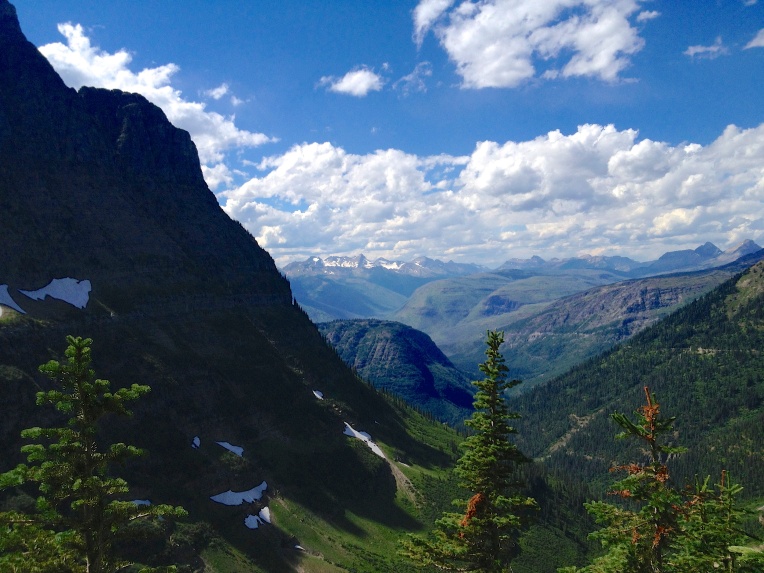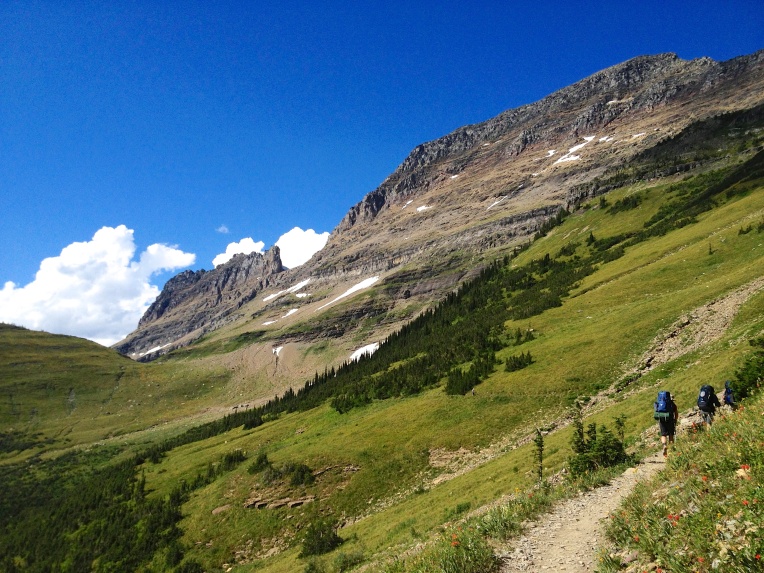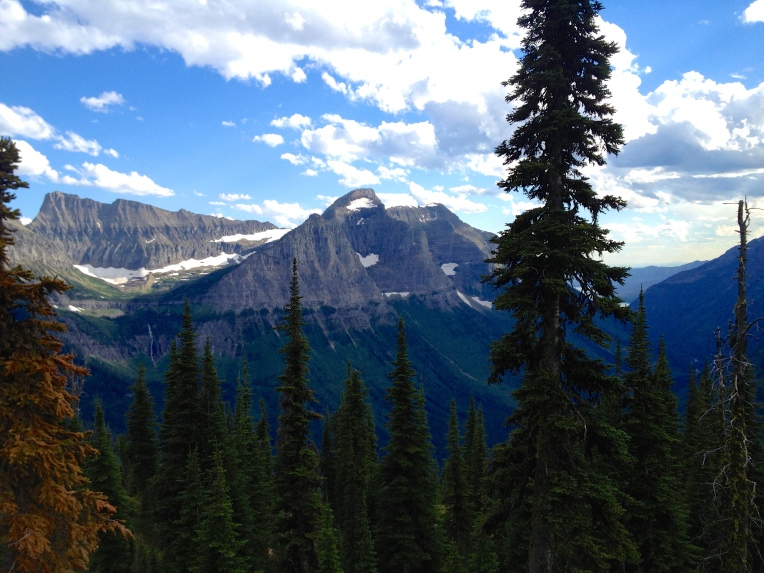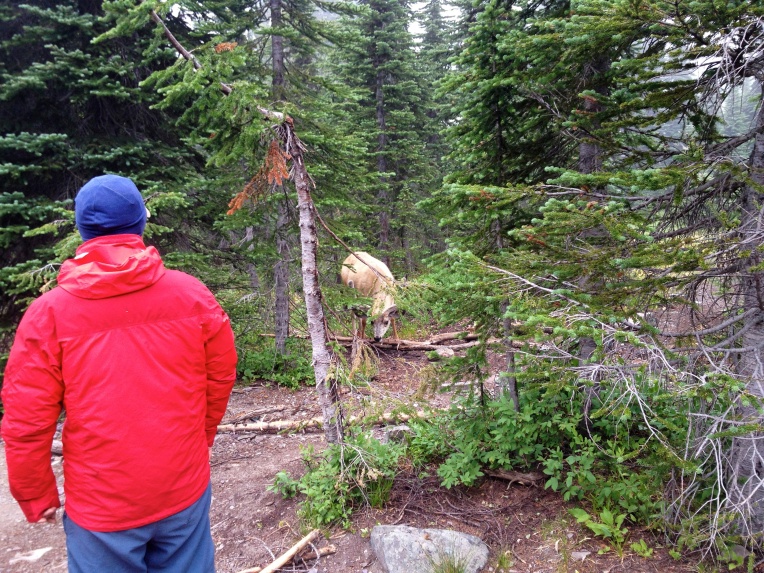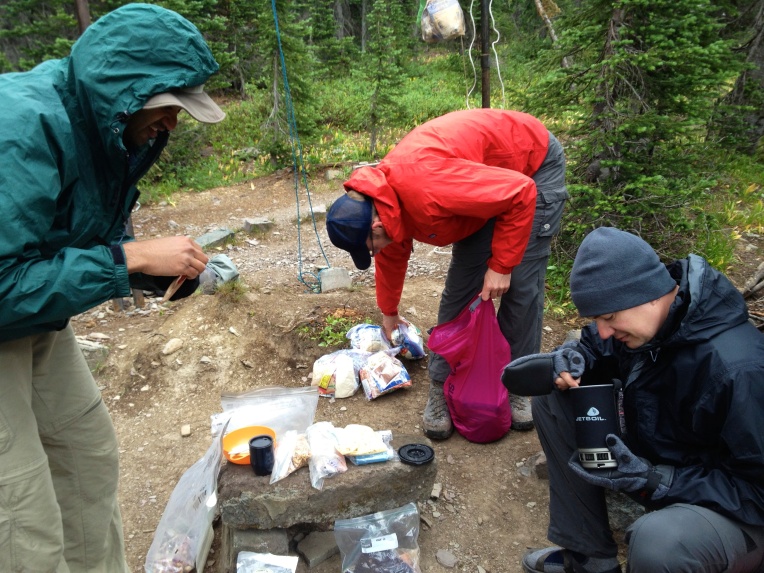Fifty Mountain to The Loop Parking Lot
Total Mileage- 13.0 miles
Total Elevation Gain- approximately 1000 feet
Total Elevation Loss- approximately 2500 feet
Our final hiking day would take us from Fifty Mountain campsite to The Loop parking lot via Flattop Mountain Trail in Glacier National Park (Montana).
We knew this hike would involve significant distance and a ton of downhill with a big climb at the very end. The only significant elevation, other than the end, was within the first hour of our hike and it was about 300 feet. The elevation gains and losses are estimates, as I had a hard time finding exact numbers online. As you would imagine, this trail runs almost entirely along the top of Flattop Mountain and then gradually descends from it.
We got up early to get a good jump on the day. We were estimating the hike taking roughly 6.5 hours at 2mph. As it turned out, we averaged about 3mph and finished in about 4.5 hours. To the top of Flattop Mountain and along the top of it, it is… well.. flat (as it’s name suggests). And the hiking is easy. The trail was easy without any obstruction. The only portion that begins to be obstructed is the descent, as the Thimbleberry plants choke the trail.
I have to admit that this was my least favorite hike over the eight days. There were a couple of reasons why. First, about 90% of the hike was among the scorched pines. There were two forest fires that ravaged the park a decade ago, burning a third of the park. If I had to rethink the final leg of this hike I may have opted for Highline Trail. Second, while even the beauty of my least favorite portion of the North Circle Route is greater than most places I have been in my life, compared to days one through seven Flattop Mountain Trail was definitely not an exclamation point at the end of the trip.
Don’t get me wrong, it was beautiful. But it just didn’t measure up to the previous days. I know I kind of sound like a trail snob, and I realize that Flattop Mountain Trail crushes anything in Indiana, but we had been spoiled up to this point.
Once we were finished descending, the hike was still about two miles to the junction. The junction sign will show Granite Park and Granite Park Chalet to the left. If you parked in The Loop… this is your turn. Let me say something about the final ascent. It is approximately 700 feet and approximately a half-mile. After hiking 12.5 miles, you may have a second wind as you think about getting into your air-conditioned vehicle. But just be prepared for the climb. It seems as if it goes up forever!
The North Circle Route was nothing short of spectacular. As I mentioned early in this series of posts, it was rated by several blogs as one of the top 10 hikes in the world. After hiking it I would have a hard time disagreeing. I would, without question, recommend this hike to serious backpackers. It is truly a trip of a lifetime.
As a side note, Arvin’s boots made it. After the soles breaking out on Day 2 and significant surgery on them throughout the trip… they reached their final destination: the trash can.
Peace…
Brandon







